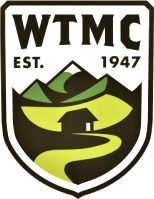Tagged: Takahē, Takahē Recovery Programme
- This topic has 0 replies, 1 voice, and was last updated 2 years, 7 months ago by Tony Gazley.
-
AuthorPosts
-
-
Tony GazleyKeymaster
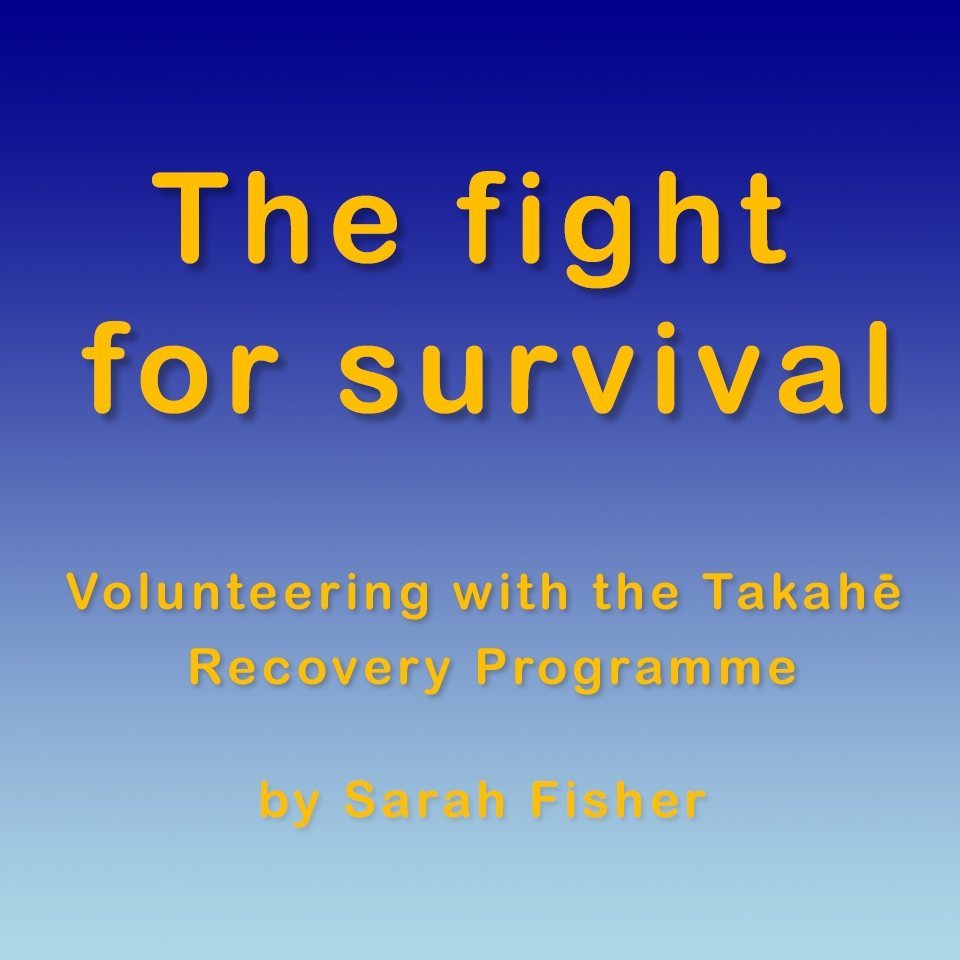
Ka tū te moho, kia ora ake anō.
The takahē stands, in order to live again.
Suddenly a royal blue head pops up in front of me while I’m walking along checking a trapline. I stop and stand still so I don’t startle the pair of noisy takahē that have just wandered out from the tussock. Even though I am at Burwood Takahē Centre which has over 100 takahē, I still think this experience is incredibly special as there is something really magical about these giant birds. To me they embody the unwavering resilience and the fight for survival of our native taonga species. They are truly beautiful birds.
Earlier in the year I wrote about the importance of conservation volunteerism (see here) and how excited I was to have the opportunity to volunteer at Burwood Takahē Centre in April. The takahē has always been one of my favourite birds because of their remarkable history—not only is the takahē one of New Zealand’s taonga species, it is a conservation icon and survivor. This is because the takahē was in fact presumed extinct for nearly 50 years before a small wild population was rediscovered in the Murchison Mountains in 1948. These birds just kept fighting to survive. The takahē is the world’s largest rail, but is also flightless which has made it particularly vulnerable to mammalian predators.
“If you want to save a species or habitat, it’s a fight forevermore. You can never turn your back.”
Since 1948 the attempts to save the takahē have pioneered conservation techniques for all protected species not just in New Zealand but all around the world and is New Zealand’s longest running endangered species programme. The Burwood Takahē Centre was established in 1985 to continue this fight to save the takahē. It provides the best conditions for takahē to breed and rear chicks, and get the birds ready for release into the wild which is the ultimate goal of the Takahē Recovery Programme. The takahē population is slowly growing with over 450 birds with an annual growth rate of 10% and now includes a second wild population that was established in Kahurangi NP in 2018. However, it is still considered nationally vulnerable and a population we must closely guard, especially as the wild populations are not yet self-sustaining. We can’t afford to be anything less than careful with this precious population.
On the first night at Burwood, I met the other volunteers—Mel, Graham and Chris. I fell asleep listening to the noise of all the takahē – they would often go quiet for a while and then all at once start calling to each other. I really wanted to know what they were all talking about at 3am but they didn’t share those secrets with me unfortunately.
The next morning I got to meet the fantastic Burwood Takahē Team—DoC Rangers Lisa, James and Erica who were full of knowledge about the birds and answered our endless questions about them.
Our first task for the morning was providing the birds’ supplemental feed. The birds are capable of foraging for their own food amongst the red tussock plains but to keep them in the best condition for breeding and maintain the sustainability of the Burwood tussock environment, they are provided with supplemental pellets twice a week. As I cleaned out their feeding hopper and poured in the pellets, some of the more impatient takahē surrounded me, clearly telling me to hurry up with it. We waited for them all to come to the feeding hoppers so the DoC Rangers could check the birds out from a distance—doing a visual health check and check they were eating.

Takahē at a feeder Later that morning, we helped the DoC Rangers weigh and move a family of takahē to another pen. This included a couple of juveniles that were clearly thriving with weights between 2 and 3kg. The takahē were weighed in their transport boxes to minimise their handling and reduce the stress to them. Despite the takahē being flightless, one of them showed impressive high jumping skills and managed to jump over a low fence while we were preparing to put it into the transport box. Burwood also provides an essential component for preparing takahē to return to the wild—the takahē ‘boot camp.’ When snow covers their tussock habitat in winter, the takahē go into the beech forest in search of food—the rhizomes of summer green fern hypolepis millefolium. While takahē chicks seem to instinctively know they need to grub for food, they must be taught how to find the fern’s underground stems by other takahē. Burwood’s top pen includes beech forest with the fern so in winter young birds are put in these pens with older birds for a few days for their ‘boot camp’ so they can learn these survival skills for their return to the wild.
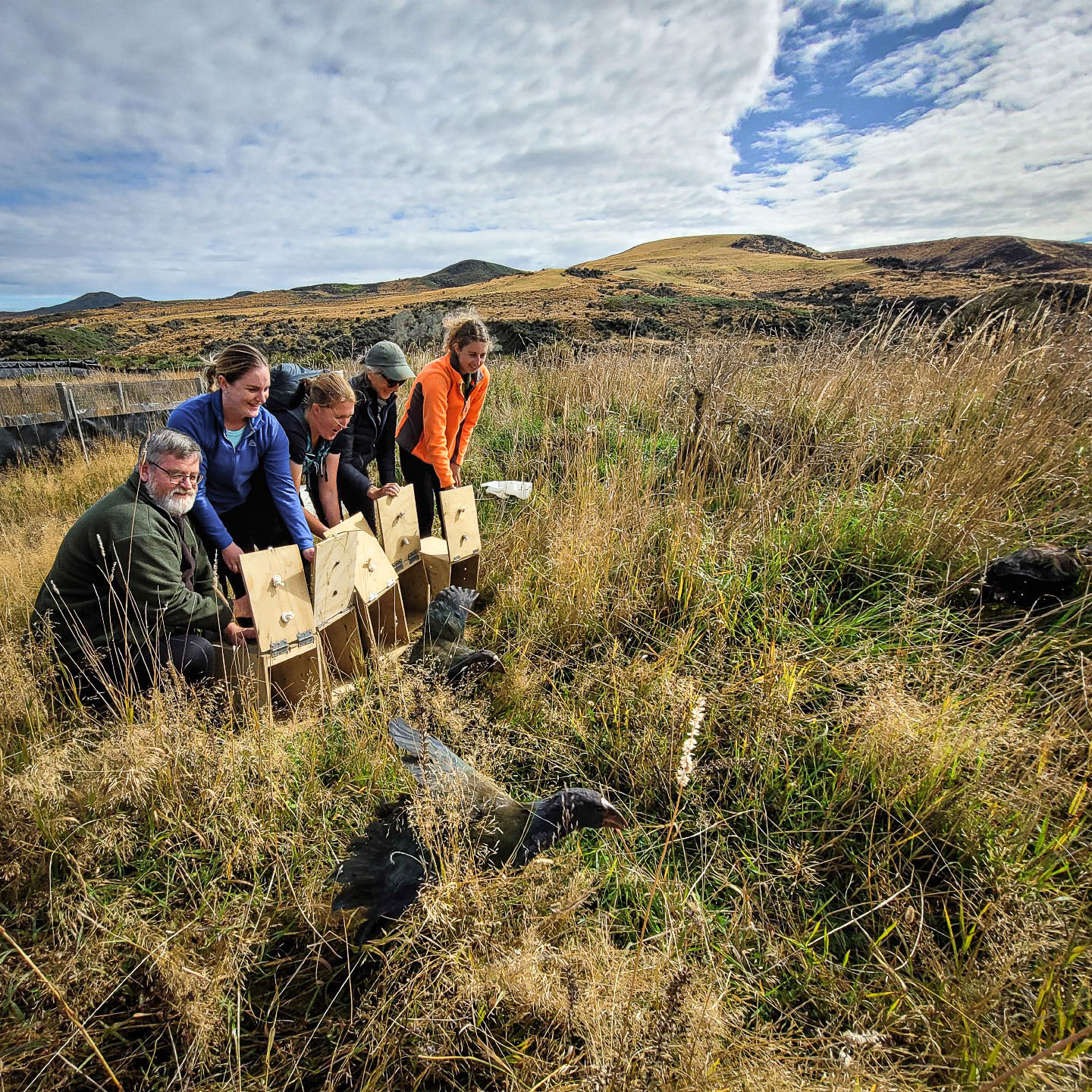
Takahē release 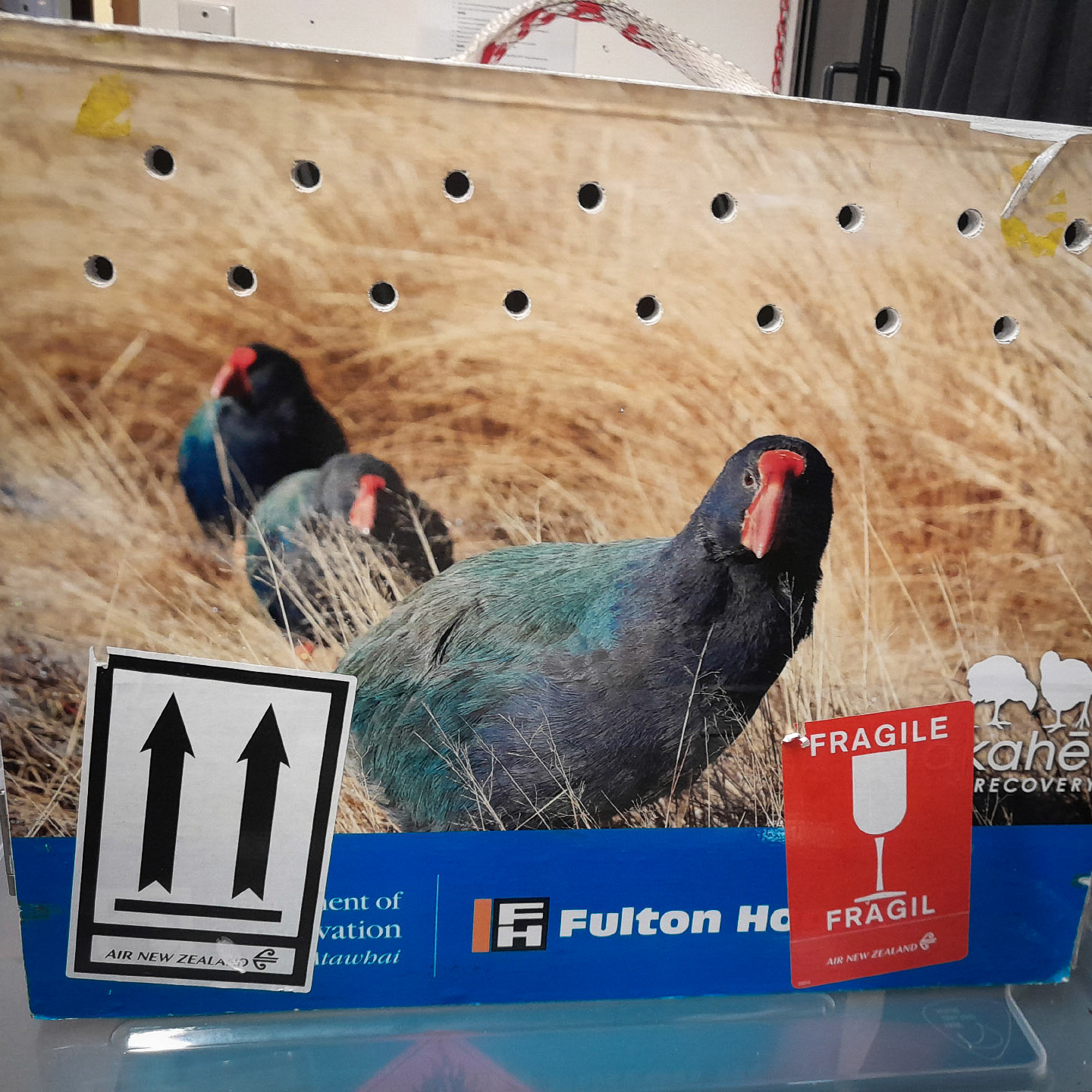
Takahē carry box In the afternoon, we all took off in different directions to check the traplines around the Centre. All of us had done a form of trapline work so we were all familiar with the DOC 200 traps and it was as I was walking up the fenceline to one of my traps that the pair of takahē wandered out in front of me and provided a lovely distraction for a while. My last two traps for the day involved ‘swimming’ through deep red tussock that sometimes swallowed me up to my waist. I was quite impressed that the takahē could wade their way through it all but this is their natural habitat and what they love.
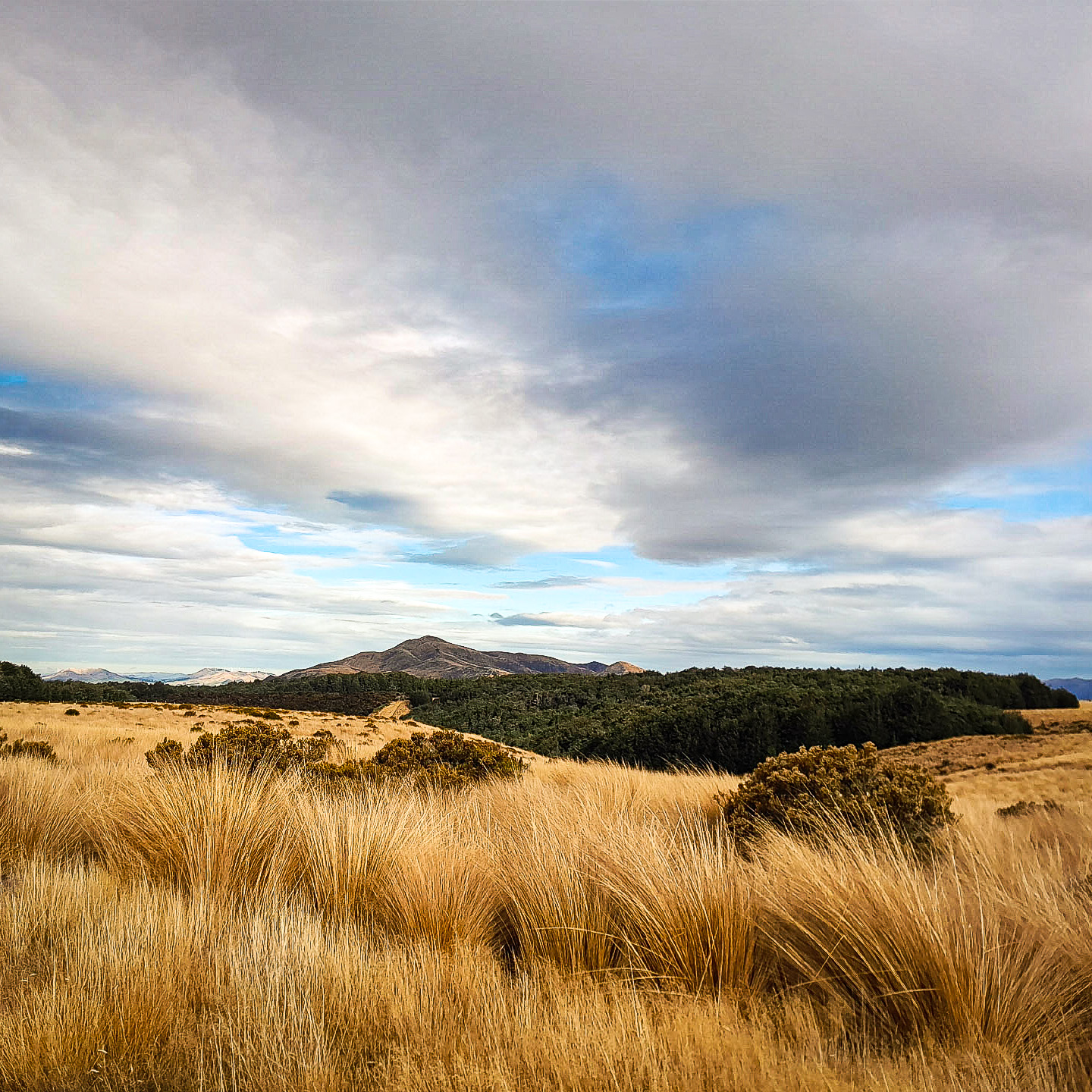
Takahē country The next two days we worked on our big project for the week—building a new pen for the takahē that could be used to help capture them when health checks were needed; and dismantling the old pen. Taking down the old fencing was pretty strenuous work—wire cutters, sledge hammers and combined strength were all used. It was cold in the mornings but once we got working we all warmed up really quickly and we were incredibly lucky with the weather that we had no proper rain the entire week. The new pen seemed to come together very quickly with the amazing teamwork from the group. With teaching from James, I learnt how to D-clip the plastic mat and netting together, although I was very slow and clumsy compared to Erica whizzing along next to me. After this we started putting some finishing touches on the pen which included transplanting some tussock into the pen for the birds. James assured us that transplanting medium sized tussocks was a pretty easy two-person job. Graham, Mel and I all looked a bit disbelieving at him but we decided we were up for the challenge anyway. Graham and I had a go (also breaking one shovel in the process!) and with a bit of extra help from James we finally managed to free the tussock and drag it over to the hole that Erica had prepared for it. Red tussock, like the takahē, are remarkably resilient so when transplanted they will grow happily and provide a nice environment for the birds in the pen.
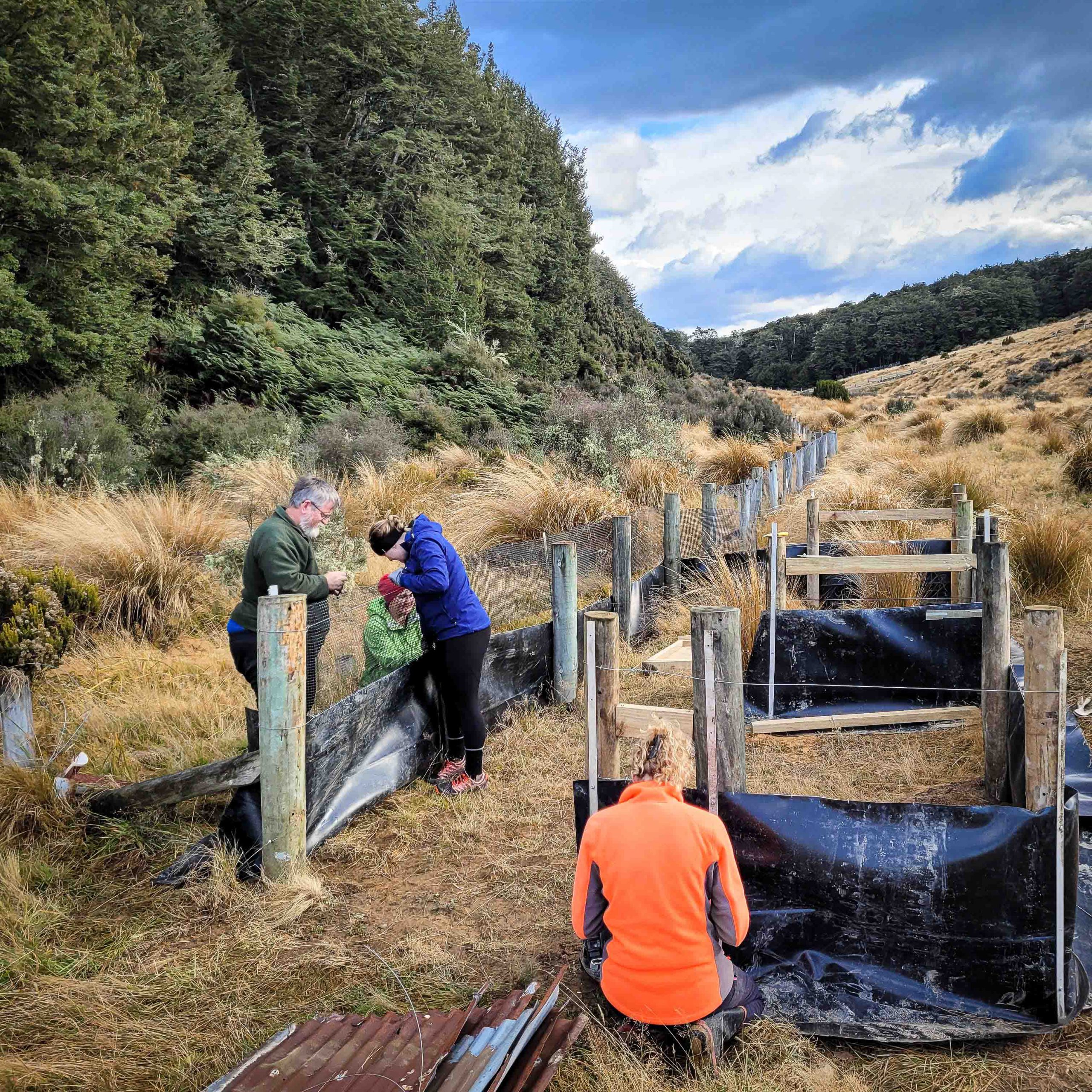
Sorting out the D clips 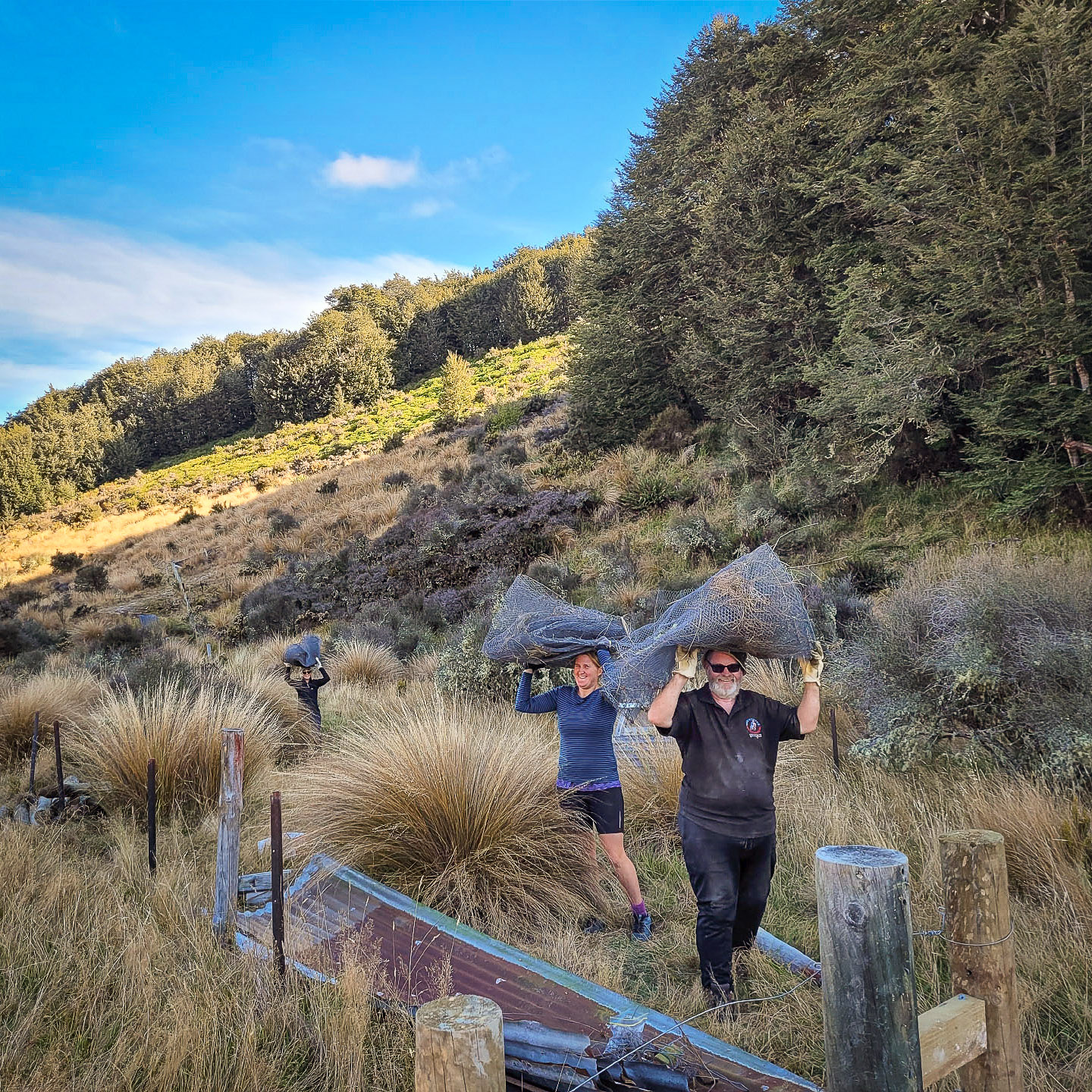
Carrying fencing 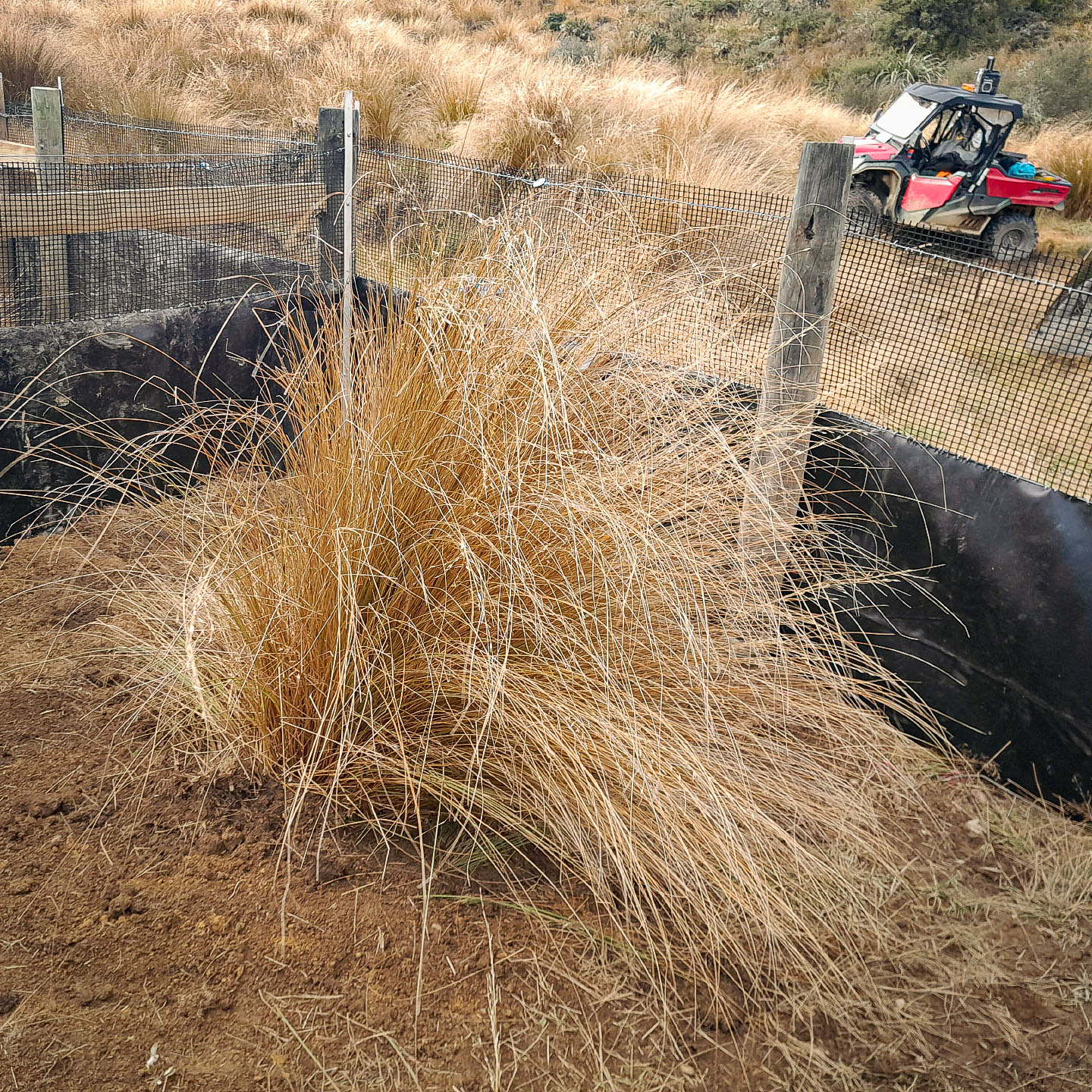
Transplanted tussock 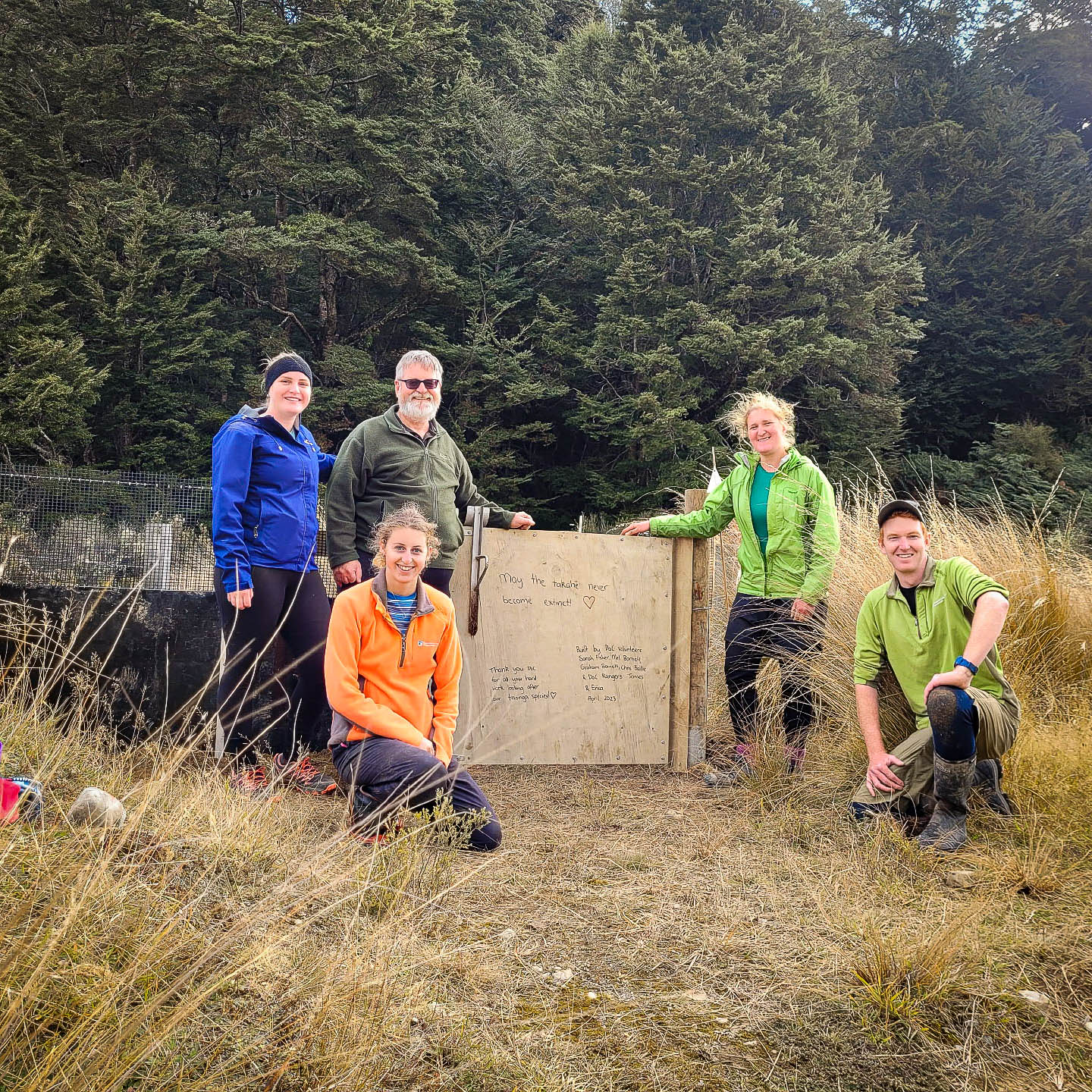
Takahē pen and the workers One funny moment I had during the week was when I drove into Te Anau to go to the supermarket, I had the additional task to drop off a poo specimen that had been collected from the takahē to be sent to the lab as the health of all the takahē is very closely monitored. Takahē seem to be prone to picking up salmonella and while it is not harmful to them, it can be harmful to other birds. They can also carry high loads of coccidia, a gut parasite. There is ongoing research in both these areas including developing suitable screening protocols and treatments. I was delivering this sample to Nicholette, the supervisor of the Takahē Recovery Programme but there was a bit of confusion on her address and I was worried about delivering the samples to her poor unsuspecting neighbours instead which I didn’t think they would appreciate. A fun fact that I had found out before the volunteer week was how takahē poo 7-9 metres a day because of their high fibre diet and they can often spend up to 19 hours a day eating. Our last day involved feeding the takahē again and doing a clean up of the indoor working areas.

Takahē Country “We all have a responsibility to protect endangered species, both for their sake and for the sake of our own future generations.”
The future for the takahē looks promising but we are in desperate need of more suitable predator free wild sites as the population grows since the current sites are filling up fast. The Predator Free 2050 movement is an important contributor towards this. The goal of the Predator Free movement is not just to hold the line against predators anymore but push that line right back until we achieve eradication so we can insure the future for our native species like the takahē. It’s a big goal but we can’t afford to be anything less than ambitious if we want to succeed and look after these beautiful birds. We also need to ensure the protection of our native grassland, as these habitats and food sources are essential to ensuring the survival of takahē in the wild. There are many ways you can get involved with the Predator Free 2050 movement—see my suggestions here.
It was a privilege to volunteer at DoC’s Burwood Takahē Centre and contribute to helping the conservation of one of our taonga species and something I would love to be involved in again. DoC estimates that around 200,000 New Zealanders give their time to conservation projects each year. Every little bit counts and we can all contribute in a meaningful way. I would highly recommend getting involved in any of their volunteer activities that you can search for here and the Takahē Recovery Programme here.
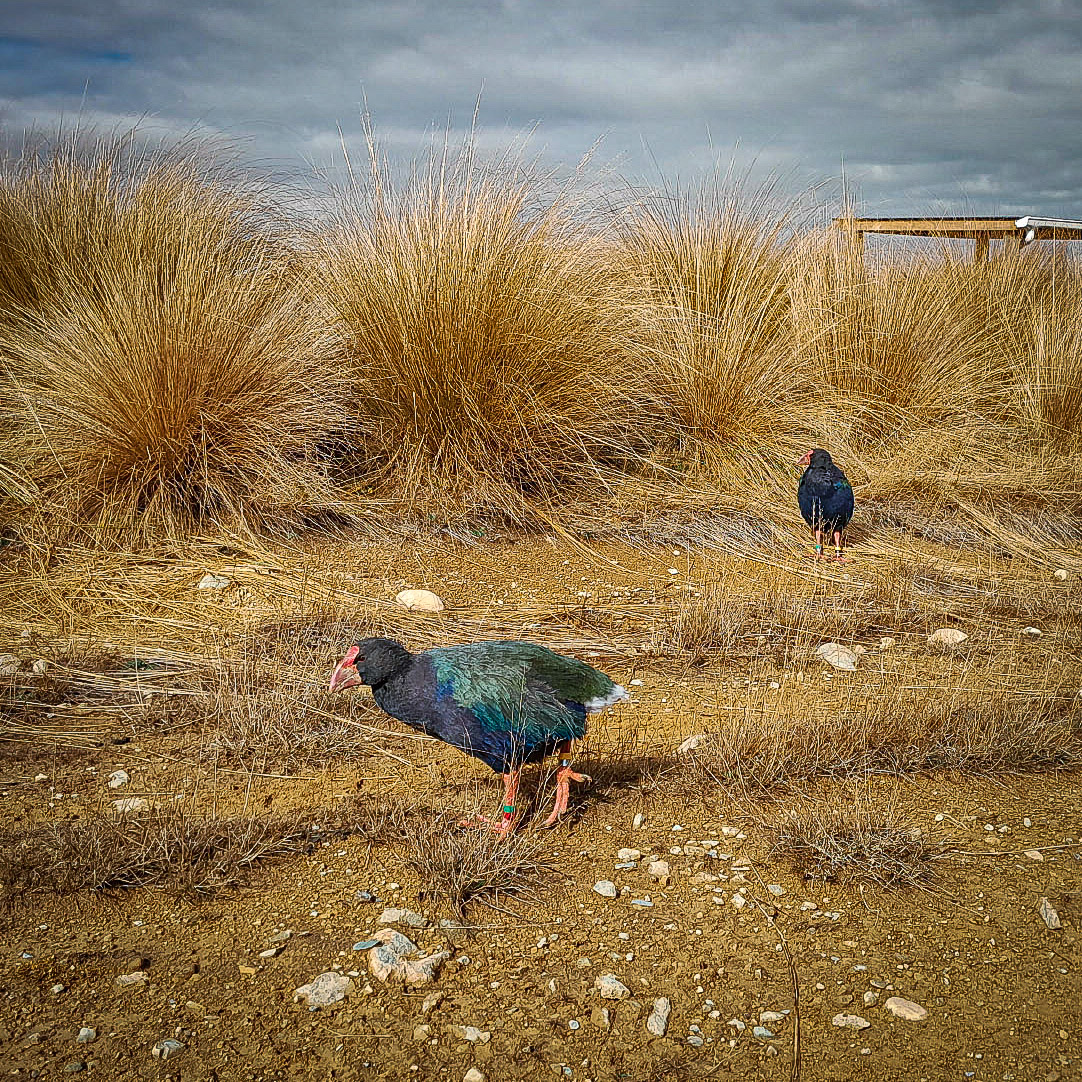
May the magic of the takahē live on forever and it never be considered extinct again.
-
-
AuthorPosts
